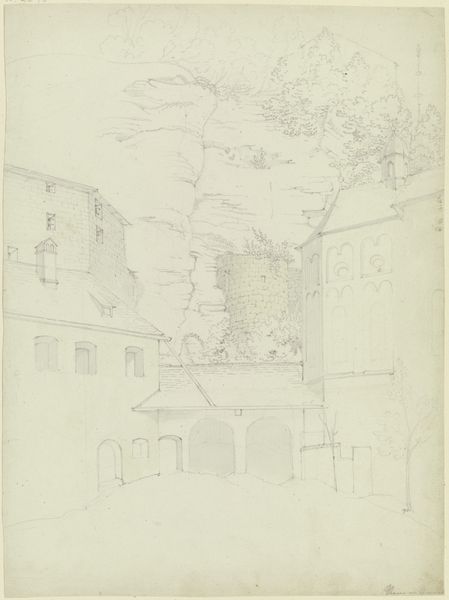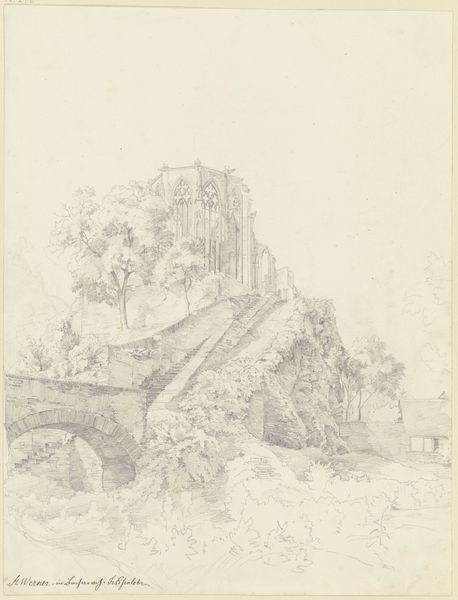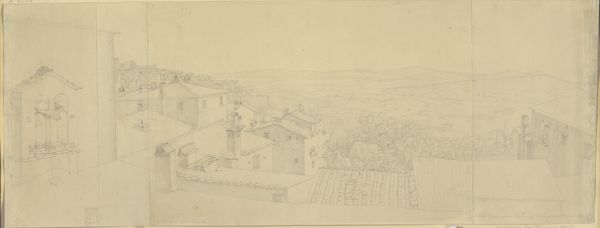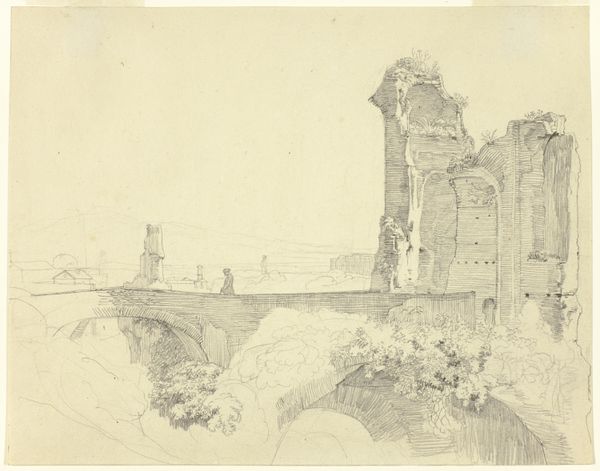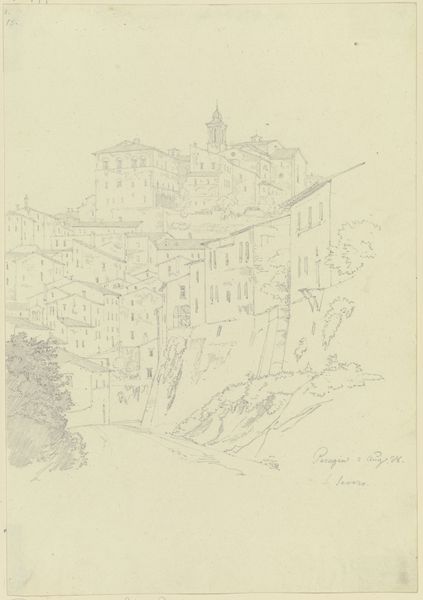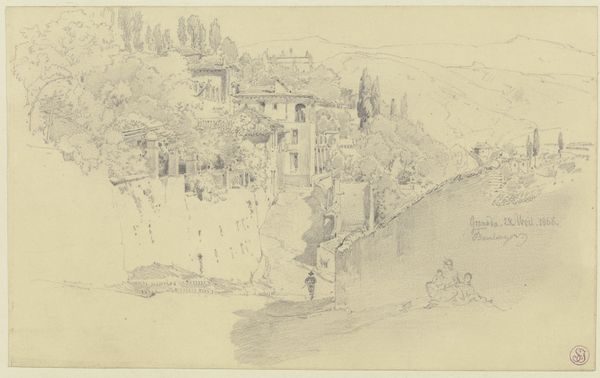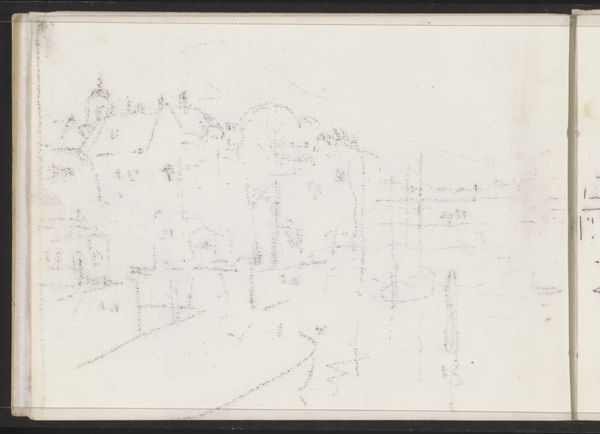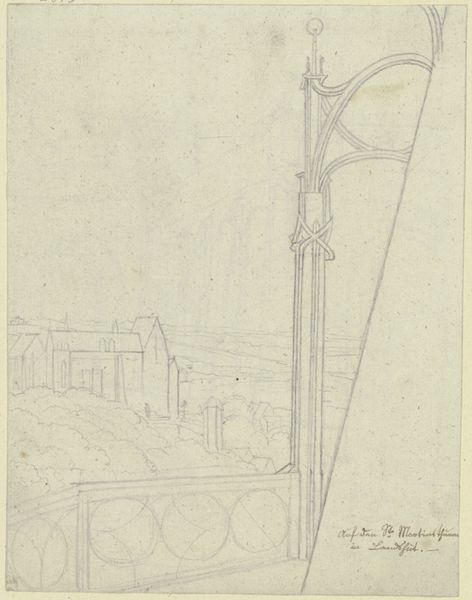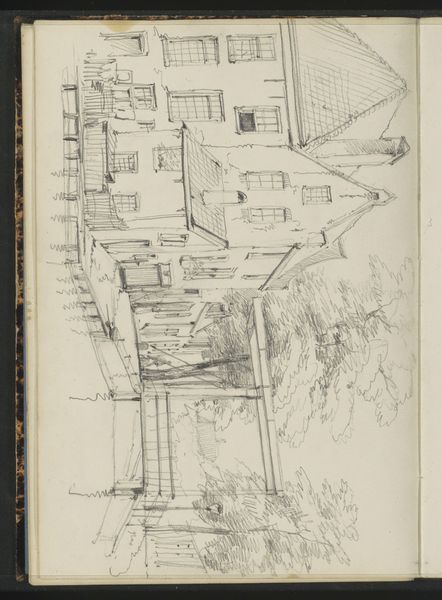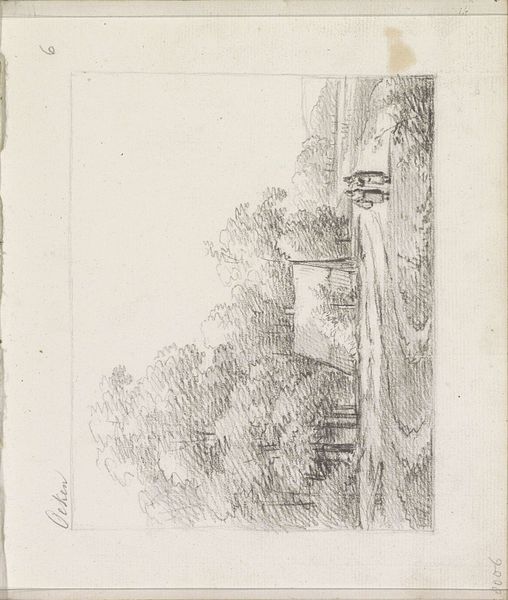
drawing, paper, pencil, graphite, architecture
#
drawing
#
landscape
#
etching
#
paper
#
german
#
pencil
#
graphite
#
architecture
Copyright: Public Domain
Curator: This delicate drawing offers us a view of the Fortress of Hohensalzburg by Karl Ballenberger. Executed in graphite, pencil and etching on paper, it's a fascinating example of landscape art. Editor: My initial impression is that it's ghostly. The pale graphite and almost skeletal lines create a sense of transience and perhaps a touch of unease despite the inherent stability of the architecture depicted. Curator: Precisely. Note how Ballenberger uses the contrast between the fortress, perched high and solid, and the hazy lower town to establish a visual hierarchy. The composition invites us to consider the power dynamics at play, the fortress quite literally lording over the landscape. Editor: I see what you mean about hierarchy. Thinking about who traditionally occupies such spaces of power, the fortress can be read as a symbol of patriarchal dominance, control, and even exclusion. Were there specific historical tensions present in Salzburg at this time? Curator: It's important to recognize his manipulation of depth using line and shading, right? Notice the stark contrast that focuses the eye on the citadel at the very top, using lighter tones to wash out the scenery around the buildings lower down the slope. The geometry feels intentional, each line working hard to make this image so believable. Editor: Absolutely. What do you make of his choice to emphasize the structural integrity, this almost hyper-detailed precision, against the somewhat indistinct suggestion of landscape? It strikes me as deliberately framing power against the natural world, which brings forth current considerations around climate justice and societal inequity. Curator: I would also urge listeners to see the brilliance of its design as something in and of itself; as proof that there can be undeniable and uncontextualized beauty within composition and materiality. Editor: While I appreciate your read of formalism here, let’s not divorce ourselves entirely from the historical framework and political connotations of Ballenberger’s drawing. Curator: In any case, it leaves us with ample to ponder, offering both aesthetic delight and an invitation for deeper investigation. Editor: Indeed. The drawing makes a case for us to keep interrogating the images we inherit.
Comments
No comments
Be the first to comment and join the conversation on the ultimate creative platform.
